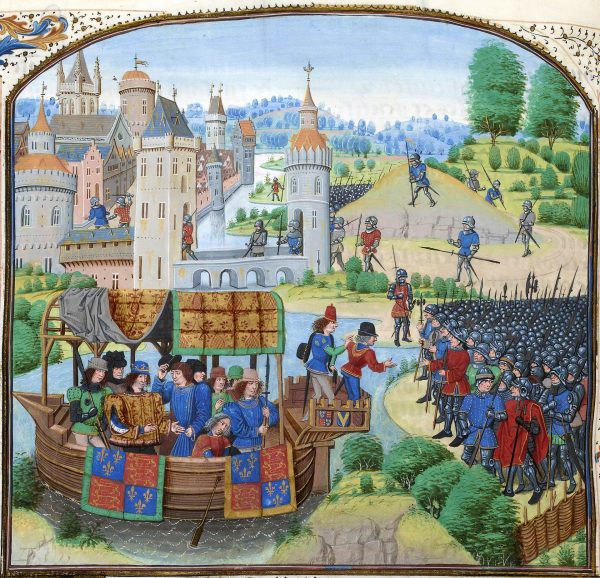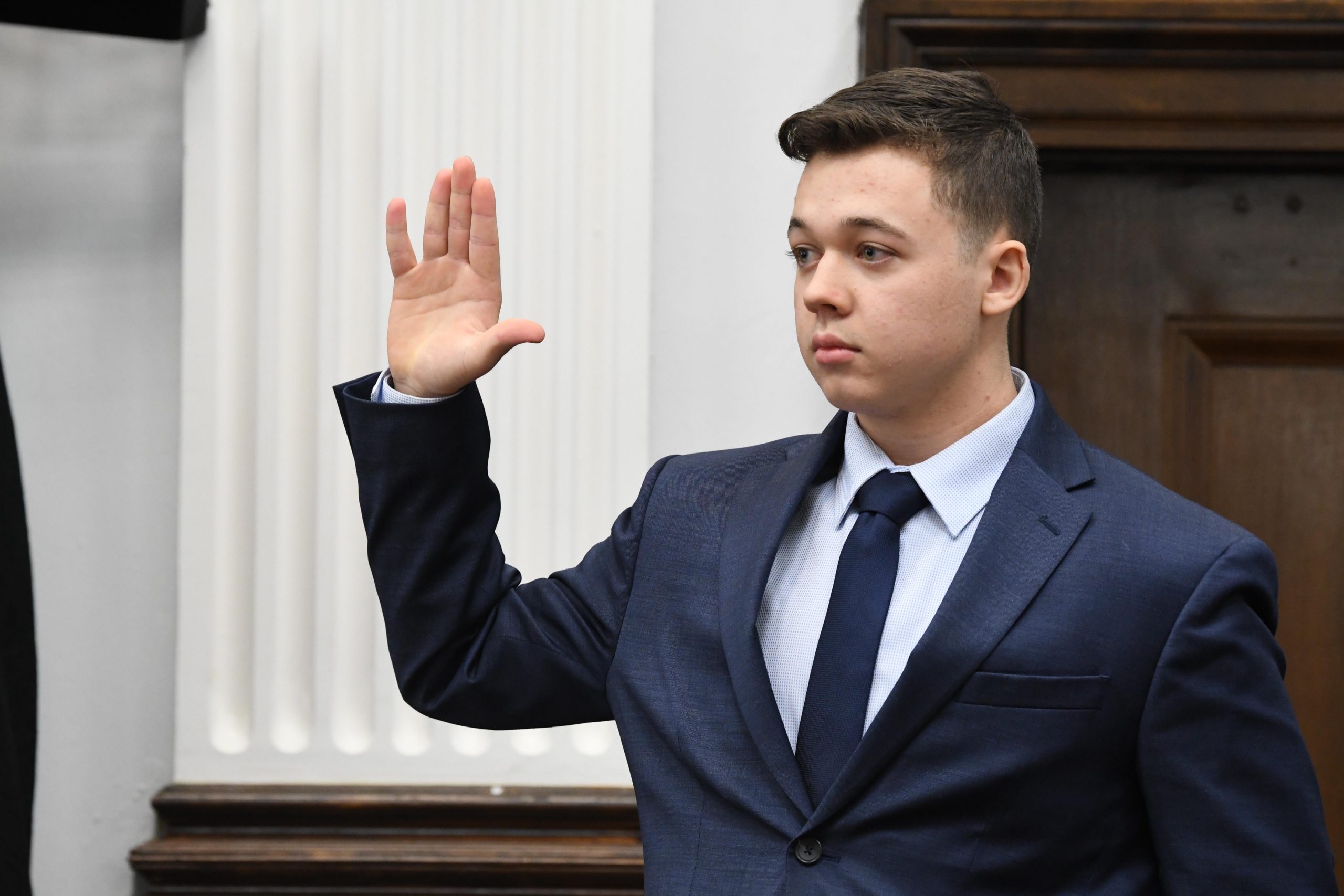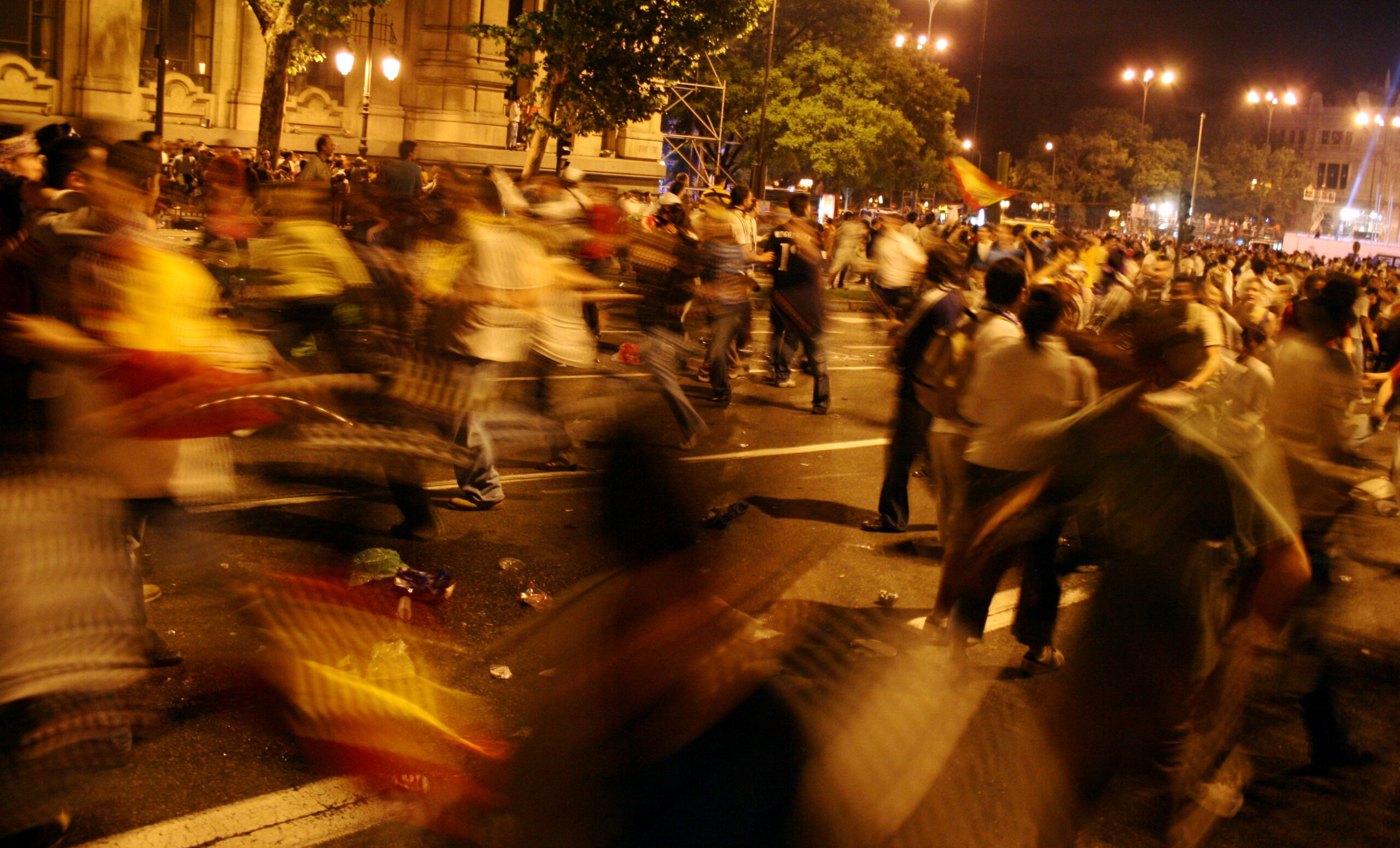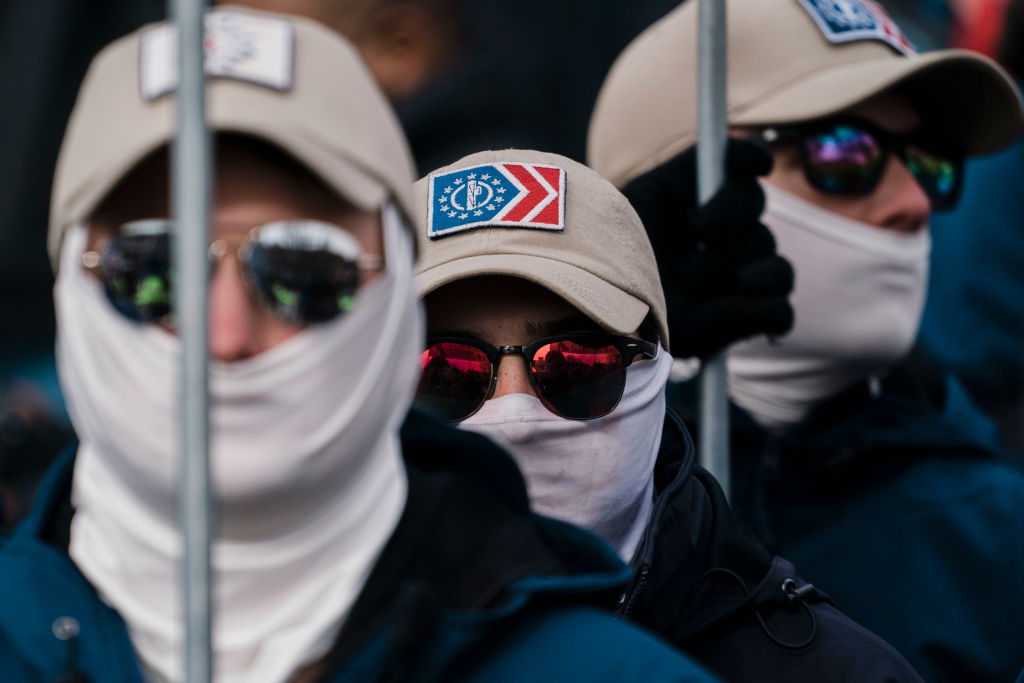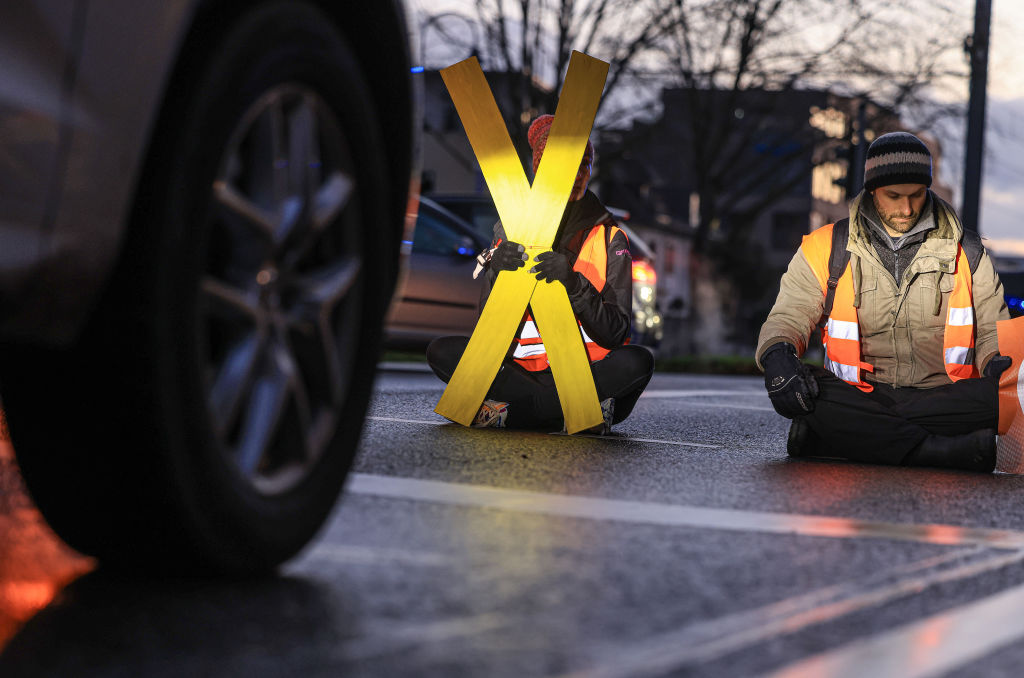Serf's up.
What Antifa Won’t Tell You

Antifa’s leading insider reveals more by what he doesn’t say than what he does.
Observers of the demonstrations, statue toppling, and riots that followed the police killing of George Floyd on May 25 could not help but notice a distinctive pattern of protest. Legitimate demonstrators stood on the frontline, while stones, Molotov cocktails and other objects were hurled from the rear. Police could not move against the true offenders without breaking through the frontline. At universities, protesters appeared like clockwork armed with signs to disrupt “unwelcome” speakers. These actions all speak to a high degree of coordination and control.
The public has learned to associate these tactics with Antifa (a group whose name stands for “anti-fascist”). Images of Antifa demonstrations show a mostly young, male, and white membership, often armed with police batons. They appear at demonstrations, fight with their opponents, and deny speaking platforms to their enemies. Antifa’s reach is world-wide as it captures the imagination of Millennials.
Yet, almost universally, Antifa is described as a makeshift network of organizations united by a common ideology. Sympathetic media characterize Antifa as a loose network of autonomous activists operating without a control center. Is this true?
The Inner Workings
In the general public, there are now two prevailing narratives about Antifa:
According to one version (which the Trump Administration favors), Antifa is a sinister mastermind, organizer, and/or instigator of the demonstrations-turned-riots that hit major American cities this spring and summer. And so, President Trump has ordered a Department of Justice investigation of Antifa as a possible terrorist organization.
The mainstream media, on the other hand, projects a benign image of leaderless, localized, and autonomous activists, who acknowledge being part of protests but deny organizing them. Implied is that Antifa gins up violence, but for a good cause.
Which is the real Antifa? By design, it is difficult to say. Antifa deliberately shrouds itself in mystery. It has no identified officers, official press officers, official website, or membership lists. Its trademarks are masks and black clothing.
But the troubling work of one man offers a glimpse into the truth. His name is Mark Bray.
Mark Bray’s Antifa Handbook, published back in 2017, promises to penetrate the Iron Curtain shielding Antifa from public scrutiny. To establish his authority on the subject, Bray offers his “activist credentials” (as an organizer of Occupy Wall Street) and his interviews with 61 Antifa members from 17 countries.
Thanks to his “best-selling” Handbook, Bray has become the “public voice” of Antifa, with appearances on NPR, MSNBC, and Meet the Press. The Antifa Handbook was featured in the Chronicle of Higher Education, Los Angeles Review of Books, The New Republic, and Vanity Fair. More recently, Bray has authored an op-ed in the Washington Post and been interviewed by Wisconsin public radio, American Prospect, and Christiane Amanpour.
Bray, who identifies himself as a historian of human rights, terrorism, and political radicalism, refuses to call himself an “activist” for Antifa. Rather, claiming to apply “the logic of history,” he defends his book as a resource that will aid activists as they do battle with “fascist” enemies.
Contrary to his protestations, Bray’s book reveals him as an Antifa advocate, or at least a strong sympathizer. True, he may not be a formal member of an Antifa cell, but he nowhere questions Antifa tactics, presents counterarguments, or criticizes Antifa’s allies (such as the Southern Poverty Law Center).
Like it or not, Bray is the closest we have to an Antifa insider—albeit one who spills the beans in a most sympathetic manner.
The Cambridge Dictionary defines a “handbook” as a book that contains instructions or advice about how to do something or the most important and useful information about a subject.
It is in this vein that we extract from the Handbook the most “important and useful information” about Antifa’s philosophy, strategy, and internal workings.
Conjuring Enemies
If Antifa can establish in the public’s mind that it is “anti-fascist,” then any person or organization that Antifa opposes automatically becomes “fascist.” The words we use are important. Marx’s incantational use of such buzzwords as “exploitation” and “surplus value” gave “capitalism” a negative connotation from which we have yet to escape.
The Handbook deploys a grab-bag of accusatory labels—from the standard “neo-fascism,” “white supremacy,” and “anti-LGBQT” to the more obscure epithets of “ableism, heteronormativity, patriarchy, nationalism, transphobia,” and “class rule.”(If readers have trouble with the above jargon, they are not alone.)
As one Handbook critic points out: Almost anyone can be labelled fascist. Simply define fascism in terms of unpopular ideas, practices, personality traits, then pin “those deplorable characteristics”—White Supremacist, Homophobe, neo-Fascist, xenophobe, racist—on the intended targets.
The rich catalog of Antifa epithets feeds cancel culture. Just label potential victims as “heteronormative” and they are gone before they know what hit them.
Yet all who wish to impose this narrative face a challenge: there simply isn’t that much organized bigotry in the U.S. Real neo-Nazi organizations do exist, but on the fringes of society and politics. The National Alliance, which Bray characterizes as “most dangerous,” has a total of only 1,400 members. The KKK has some 3,000. And yet one source claims, entirely without evidence, that white supremacy groups can boast 25,000 members. The Justice Department counts about 5,000 hate crimes per year, most of which are “intimidation and vandalism.” Hate crimes have not increased in number over the past decade.
Bray’s challenge therefore is to convince readers that “neo-fascism” in its threatening modern forms—white supremacy, homophobia, and other fringe ideologies—are not “trivial” but existential threats. Bray complains that “conventional” histories of fascism deal only with the “heroic past” of defeating Hitler and Mussolini, while neglecting the so-called fascism of today.
But fascism, Bray insists, did not disappear with the defeat of Nazi Germany and fascist Italy: “Since most tacitly conceive of fascism exclusively in terms of entirely totalitarian regimes, the prospect of fascism becomes an all-or-nothing proposition. Accordingly, few really believe that there is any serious chance of fascism ever taking over America or Europe,” he laments.
In order to convince us that the threat is real, Bray must indulge liberally in hyperbole, exaggerating the threat of resurging prejudice. He thus portrays the Western world as Antifa itself does: as threatened by a growing fascist menace. Bray argues that fascism has spread outward from fringe groupings into mass movements. The election of Barack Obama swelled neo-Nazi ranks with racists who feared a black president. The election of populist Donald Trump ratified the worst instincts of his supporters from the alt-right, and the ranks of American white supremacists swelled.
To counter the “trivialization” view of fascism, Bray pictures America and Europe as seething cauldrons of fascist thought and hostile action. His book bursts with exhaustive accounts of the nefarious antics of skinheads, the alt-right, AfD, National Front, KKK, white supremacists, and the like in the United States and Europe.
It is the task of Antifa to counter this serious threat by persuasion, research, and violence. Per Bray: Antifa must establish itself as an extension of the century-old “struggle against white supremacy, patriarchy, and authoritarianism…. The only long-run solution to the fascist menace is to undermine its pillars of strength in society.”
By Any Means Necessary
Crucially, Bray argues political institutions in the United States and Europe are not up to this urgent task. After all, Hitler came to power by popular vote. It is up to Antifa and its allies to “build a new world in the shell of the old.” As Bray writes:
At a certain point destroying fascism is really about promoting a revolutionary socialist alternative…. The question is not about establishing a neutral line beyond which right-wing politics cannot cross, but about entirely transforming society by tearing down oppression in all its forms (emphasis added).
If a threat of totalitarianism looms, and if the legitimate operations of the state are insufficient to address that threat, there is only one option: violence. Although much of the media downplays or condones Antifa’s use of violence, Bray openly welcomes “occasional” violence on the part of Antifa. This violence is justified by three arguments:
First, “rational debate” and the institutions of government have failed to halt the rise of fascism. The only hope is for Antifa to physically prevent any potential fascist advance under the slogan: “Make sure they don’t march, block them, be ready to fight them physically if necessary, stop them from organizing.”
Second, militant anti-fascism has a record of shutting down or severely hampering far-Right organizing since the end of World War II. Bray writes of a “litany of cases where combinations of physical confrontations, doxxing, infiltration, and other anti-fascist tactics have succeeded in shutting down or severely hampering local and national fascist organizing.”
Third, “fascist” violence often necessitates self-defense—although anti-fascists challenge conventional interpretations of self-defense by substituting their notion of “preventive self-defense”—or the use of violence to forestall the need for literal self-defense down the line.
Populism represents a challenge to Antifa’s use of violence. With populist movements, it is hard to justify militant strategies because “their violence is not apparent but is hidden in their policies.” Bray worries that Antifa’s beating of unarmed populist demonstrators might not sit well even with an apathetic general public.
By much the same logic, Bray believes that Antifa’s tendency to silence free speech is quite justified. Anti-fascists, he claims, value the free and open exchange of ideas—”they simply draw the line at those who use that freedom to promote genocide or question people’s humanity.” Bray does not define “questioning people’s humanity.” Could it be anyone who disagrees with Antifa’s goals?
Bray goes on to counter objections to no-platforming:
If your main objection to Nazism is its suppression of the meetings of the opposition, then that says more about your politics than about those you are critiquing. Anti-fascists don’t oppose fascism because it is illiberal in the abstract, but because it promotes white supremacy, hetero-patriarchy, ultra-nationalism, authoritarianism, and genocide.
Universities may believe that they can “buy off” Antifa and allied groups by being good social justice advocates with new ethnic studies or gender studies programs. But they fail to understand, according to Bray’s Handbook, that Antifa deplores them for “monetizing” diversity and for selling themselves to rich donors in a “new market of liberal pluralism.”
Academe’s support for diversity is “entirely hollow if it provides space for individuals and groups that not only deny the humanity of marginalized populations but are actively organizing movements to physically deprive them of their existence.” Academe cannot have it both ways.
University administrators might be pained to learn that there is no place for them in Antifa’s brave new socialist world of absolute truth.
Organized Disorganization
Although claiming to offer an insider’s account, Bray gives no general description of how Antifa is organized. Instead he describes some anecdotal cases, such as one account of “a squadron of elite anti-fascists carrying out a technical operation that’s going to win.” Insofar as this was an 18-day operation, it required money and logistics. From whence did they come? Who did the planning? Who issued the orders?
Bray’s touted interviews with 61 Antifa members fail to shed light on how Antifa is organized or even disorganized. With a justice department probe of Antifa ongoing, it is a shame that its one “handbook” has so little to say about its organization.
And yet perhaps this is not unintentional. An organization that deems most of America as hopelessly riddled with racism and extremism, that sees no way to achieve its aims except violent ones, and that feels justified silencing its opponents by any means necessary, is not likely to give away its tactical secrets. Bray reveals just enough about Antifa to keep its workings murky—and that, too, is likely his intent.
The American Mind presents a range of perspectives. Views are writers’ own and do not necessarily represent those of The Claremont Institute.
The American Mind is a publication of the Claremont Institute, a non-profit 501(c)(3) organization, dedicated to restoring the principles of the American Founding to their rightful, preeminent authority in our national life. Interested in supporting our work? Gifts to the Claremont Institute are tax-deductible.
The Left's Jan. 6 tactics are nothing new.
It's not actually about Rittenhouse.
The nation could be sliding into a state of nature.
Patriot Front may not technically be staffed by FBI agents, but the effect is the same.
Don’t be misled by peaceful protest.

